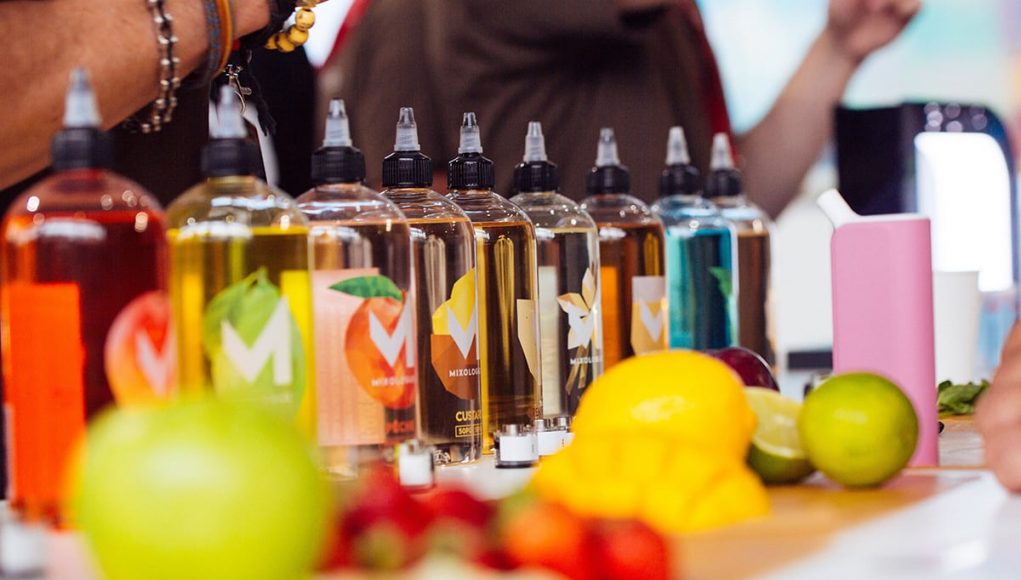“It is by improving the health of Quebecers that we will contribute to taking preventive action and reducing the pressure on our health network,” he said in a statement. “It’s our responsibility, and we will ensure that these substances become less attractive to everyone,” he said last Wednesday.
A study published in the Journal of Studies on Alcohol and Drugs, concluded that flavour restrictions may reduce the use of vapes among adolescents and young adults (AYAs). Titled, “Adolescent and Young Adult Response to Hypothetical E-Liquid Flavor Restrictions,” the study examined how restricting flavours would affect current AYA users’ consumption patterns and intentions to quit. A total of 1,414 participants were asked about patterns of use, device type, preferred flavours, and intent to discontinue use.
A total of 38.8% of the sample reported they would quit vaping if only tobacco and menthol flavours were available, while 70.8% said they would quit if only tobacco flavours were available. AYAs preferring fruit/sweet flavor were the most likely to quit under a tobacco and menthol product only restrictions. While those using cooling flavors (e.g., fruit ice) reported higher odds of discontinuing use under a tobacco-only product standard, compared with menthol flavor users.
But what have data from places where such bans have been enacted show? Are they effective? Lets look at California’s Proposition 31 which was signed into law in 2020 and banned flavoured tobacco products including vapes.
Reports about the infectivity of the measure keep emerging. In fact even cities which have set their own ban are having a hard time enforcing it. While reports of an ever expanding black market of the banned products, where anyone can obtain any product of their liking, keep emerging.
Insisting on a strategy that has never worked
Experts in the fields of public health, consumer rights and tobacco harm reduction, have continually argued that the measure is based on prohibition, a strategy that has never worked. “Prohibition has never worked. It didn’t work with alcohol or marijuana, and it won’t work now,” said Tom Hudson President of the California Taxpayer Protection Committee in Rocklin.
Similarly William F. Shughart II, a J. Fish Smith Professor in Public Choice at Utah State University’s Huntsman School of Business and Josh T. Smith a research manager at the Center for Growth and Opportunity at Utah State University, have reiterated that the ban would just push Californians back towards unflavored tobacco products, typically cigarettes. “Tobacco policy should focus on harm reduction—and vaping is less harmful than smoking,” they emphasized.
They added that the country’s obsession with protecting children from vapes is coming in the way of smoking cessation for adults. “The worry about children is an important policy concern, but it’s overly broad. Adults also enjoy the same flavors. A glance at cocktail menus at any bar will show drinks with similar flavors. And don’t forget the fruity alcoholic seltzers and craft beers on grocery store shelves.”
The article added that ultimately, the products being banned are safer than traditional cigarettes which remain widely available. The combustion process delivers tar and other additives into smokers’ lungs, besides nicotine. To this effect, explain the authors, banning vapes which reduce the harm from tobacco “will hurt more than it helps.”
The availability of flavours is crucial
Renowned cardiologist and smoking cessation researcher Dr. Konstantinos Farsalinos, has tirelessly made the same point, saying that vape flavours are crucial at helping smokers switch to safer nicotine alternatives.
Last year, the researcher published, “The Case for Flavours in Tobacco Harm Reduction, to Save Lives”, a paper which discusses the link between flavoured nicotine products and smoking cessation success in detail. In line with the previous arguments and evidence from the real world, the report highlighted that ultimately flavour bans are a form of prohibition, which only fuel the growth of massive black markets and also lead to increased smoking rates, as many vapers would turn back to smoking.
Discussing the report in an episode on Regulator Watch, Farsalinos had actually brought up Health Canada’s proposed ban, saying that their case for such a ban was crumbling as evidence kept indicating its potentially negative impact on public health. Sadly Canada still seems to not be taking notes.
Should Canada be Concerned About an Increase in Teen Vaping?




![Recent Conference Urged Nations Worldwide to “Quit [Smoking] Like Sweden”](https://www.vapingpost.com/wp-content/uploads/2024/04/vape-conference-238x178.png)



